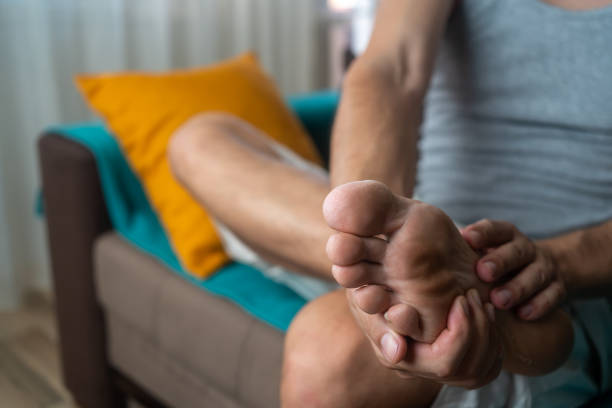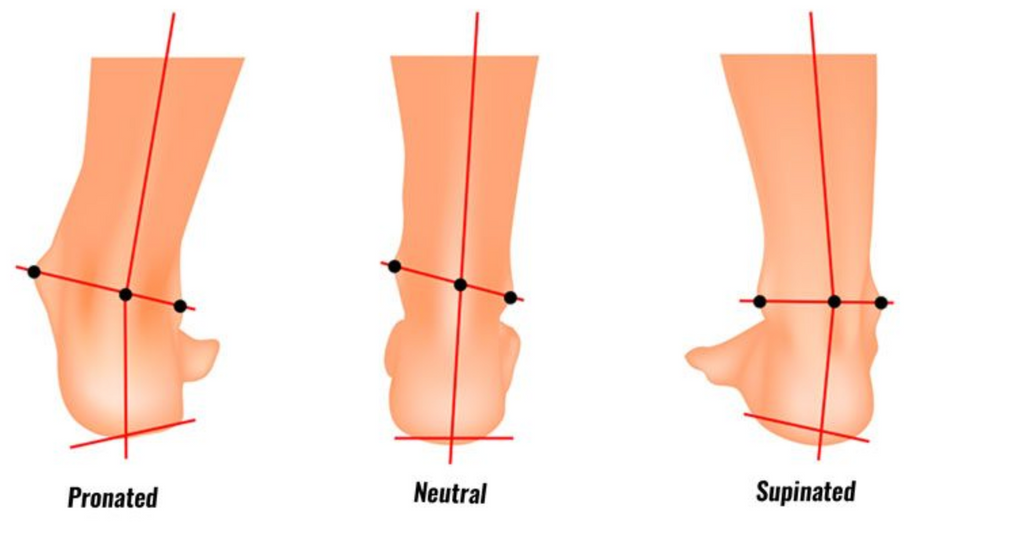How Long Do Custom Orthotics Last?
Custom orthotics last two to five years for most users, although this varies based on material quality, activity level, and other factors.
Key Takeaways:
- Material matters! Custom orthotics produced with carbon fiber or polypropylene last five years or longer, while foam and gel alternatives wear out after six to twelve months.
- Common signs that custom orthotics require replacement include the return of preexisting pain, new blisters and calluses, and visible cracks.
- Many custom orthotics can be repaired and refurbished if the inner shell remains intact. Replacement is required when the shell is damaged or you have experienced bio-mechanical changes.
What determines the typical lifespan for custom orthotics?
Material Composition
-
High-quality custom orthotics are produced with carbon fiber and polypropylene.
-
Soft materials like gel and foam wear out quickly. Hence, most custom orthotic manufacturers do not have gel or foam cores.
|
Primary Material |
Average Longevity |
|
Memory Foam |
6 to 9 Months |
|
Gel |
6 to 12 Months |
|
Ethylene-Vinyl Acetate |
9 to 12 Months |
|
Cork |
6 to 24 Months |
|
Leather |
12 to 18 Months |
|
Polypropylene |
24 to 36 Months |
|
Carbon Fiber |
12 to 36 Months |
Activity Level
- Intense and high-impact activities affect the longevity of one’s custom orthotics.
- A frequent marathon runner may have to switch carbon fiber-based orthotics every twelve months, whereas casual lifestyles are likely to have orthotics lasting five years or more.
|
Activity Level |
Average Orthotic Lifespan |
|
Extreme 8+ hours of daily activity |
3 to 6 months |
|
High 5 to 8 hours of daily activity |
6 to 12 months |
|
Moderate 4 to 6 hours of daily activity |
9 to 18 months |
|
Light 2 to 5 hours of nondaily activity |
12 to 36 months |
|
Sedentary 1 to 4 hours of occasional activity |
18 to 36 months |
Body Weight
- Body weight can play a moderate role in the lifespan of custom orthotics. Increased pressure causes faster compression in the device.
- Heavier individuals experience orthotic lifespans closer to the lower end of averages. People within normal weight limits will have orthotics last 40% longer than their overweight counterparts.
Storage Conditions
- The durability of your orthotics is just as much affected by your storage conditions as by high-impact activities and weight distribution.
- The longevity of custom orthotics decreases when they are regularly exposed to heat, moisture, or other environmental stressors.
Biomechanic Changes
- Temporary changes in biomechanics also impact orthotic lifespans, such as injuries that change one’s gait or weight distribution.
- Conditions such as pregnancy place additional stress on orthotic devices, ultimately requiring replacements and refittings sooner.
Signs it’s time to replace my custom orthotics
Changes in Pain and Comfort
- The return of pain, discomfort, or fatigue is the most common indicator that your orthotics are wearing out. Pain in the same foot, ankle, or knee prior to orthotic use signals that the material is no longer working as intended.
- As custom orthotics age, new aches, pain, and numbness may develop that did not exist before the orthotics were implemented. This is caused by the orthotics failing to fully distribute weight correctly, creating new pressure points.
- Calluses, corns, and blisters are more likely to appear as custom orthotics deteriorate, created from increased friction and pressure.
Visible Signs of Wear
- As custom orthotics deteriorate, signs of visible wear will form. Structural damage, such as cracks, tears, and holes, are common signs that require repair or replacement.
- Custom orthotics may warp or buckle over time, no longer holding their original shape and providing less correction.
- Uneven wear patterns occur when weight distribution becomes off-balanced. An uneven wear pattern, such as one side wearing faster than the other, can happen as orthotics near the end of their lifespan.
Consumer Experiences
- Any lingering bad smell that does not wash away indicates bacterial or fungal growth. While the orthotics may still provide support, it is best to throw these out.
- If you find yourself beginning to unconsciously shift your weight to one side, your custom orthotics are no longer producing effective alignment.
- Minor wear on the top layer is normal and doesn't necessarily mean replacement is required. However, excessive fraying and thinned fabrics mean your orthotics are likely breaking down.
Can I refurbish my old custom orthotics?
Yes, under certain conditions, custom orthotics can be refurbished. Repairing used custom orthotics is the most cost-effective way to restore comfort and support. Deterioration in the top cover, cushioning, and plastic shell can be replaced by contacting your original provider.
When is repair possible and not possible?
Custom orthotics can only be refurbished if the inner shell is structurally sound. Compressed padding, worn covers, and uneven wear are remediable through your orthotic provider.
|
When to Repair: A Cheat Sheet |
||
|
IF the orthotics are under 1 year AND show no early signs of wear… |
➡️ |
THEN continue to monitor. No repair or replacements needed. |
|
IF the orthotics are under 3 years OR show signs of early wear… |
➡️ |
THEN contact your provider for an evaluation or repair. |
|
IF the orthotics are over 3 years OR show multiple signs of wear… |
➡️ |
THEN contact your provider to determine if repair is possible OR purchase replacement orthotics. |
How often do podiatrists recommend getting orthotics reevaluated?
It is advised for adults to get custom orthotics reevaluated once every twelve to eighteen months. Children may require reevaluations every six months due to growth spurts.
Refurbishing is recommended for all custom orthotics after two years of continuous use to replace components naturally worn, such as the cushioning or cover.
If you are experiencing pain, you should visit your orthotic provider immediately for reevaluation and adjustments. Custom orthotics that are well-maintained may last users five or more years and still provide effective support.
How can I extend the lifespan of my custom orthotics?
Proper storage, maintenance, and repair will extend your custom orthotics’ longevity. Consumers who take care of their custom orthotics will continue to have tailored support for years; others may see their custom orthotics last less than a year due to poor care.
-
Custom orthotics should be washed weekly, or more often if they become visibly soiled. Gently hand-wash with mild soap and warm water. Avoid harsh chemicals, hot water, machine washing, or soaking your orthotics.
-
Always air-dry custom orthotics completely before use. Never use direct heat sources like dryers or radiators. Direct heat sources will cause orthotics to warp, ruining their structural integrity.
-
Inspect for deterioration regularly. Catching signs of wear early allows a greater opportunity to repair your orthotics rather than replace them.
How to Store Custom Orthotics
-
Always keep your custom orthotics in a cool and dry place away from direct sunlight or extreme temperatures while not in use. Proper storage will lengthen your orthotics’ lifespan by 50%.
How to Repair Custom Orthotics
-
Schedule annual check-ups with your podiatrist. Your provider is trained to detect early signs of wear and minor issues to ensure your orthotics are meeting your needs.
-
Visit your provider as soon as you notice pain, discomfort, or fatigue while wearing orthotics. Minor adjustments can be made without needing a full replacement.
Frequently Asked Questions
Can a well-made orthotic last “a lifetime”?
No, even the best and highest quality orthotics will not last forever. The exact durability depends on materials, activity level, body weight, and maintenance. The longevity of custom orthotics can be extended with excellent care and well-timed refurbishing.
What’s the difference in durability between custom vs off-the-shelf insoles?
Custom orthotics are produced with expensive materials like carbon fiber and polypropylene, which can cost over $100 per kilogram. These materials allow for custom orthotics to last users five or more years, while over-the-counter insoles last six to twelve months due to lower-quality materials such as gel, foam, and ethylene-vinyl acetate.
What if I switch shoes - do I need new orthotics?
Not necessarily. Many custom orthotics are meant to be swapped between shoes, but you may need new orthotics if your new shoes are a different style or depth than your previous pair. In these cases, your orthotics may not be a good match or fit correctly.
Regardless, always inspect your custom orthotics for common signs of wear. If your old orthotics fit great in your new shoes, continue to wear them together!
How can I save money regarding custom orthotics?
When purchasing custom orthotics, ask your provider about warranty periods and quality guarantees. High-quality orthotic retailers will offer free adjustments or reduce the cost of future replacements for consumers.
While browsing for custom orthotics, research your health insurance provider’s coverage for Durable Medical Equipment (DME). Some plans offer regular repairs and replacements for qualifying conditions.
It is an individual preference on when to purchase replacement custom orthotics. Most professionals recommend upgrading your orthotics when you encounter any of the following.
-
Any significant weight loss or gain warrants new custom orthotics. Since one of the primary jobs of orthotics is distributing weight, an upgrade is necessary to account for new body mechanics.
-
New orthotics are a good idea if you engage in any new sport or active hobby. A pair of custom orthotics created for sedentary lifestyles will be a poor match if you take up marathon running due to its high-impact nature.
-
Significant changes to the feet are always a prime opportunity to upgrade your custom orthotics, such as when you experience an injury or have surgery.
Conclusion
Custom orthotics are an investment in one’s long-term comfort, health, and mobility. The longevity of custom orthotics depends on multiple factors, like material composition, activity level, and maintenance.
Many users find their custom orthotics last between one to five years through good cleaning practices, storage, and timed refurbishing. However, even the best orthotics will eventually deteriorate with regular use, which is why periodic evaluations with your orthotic provider are critical for great foot support.




